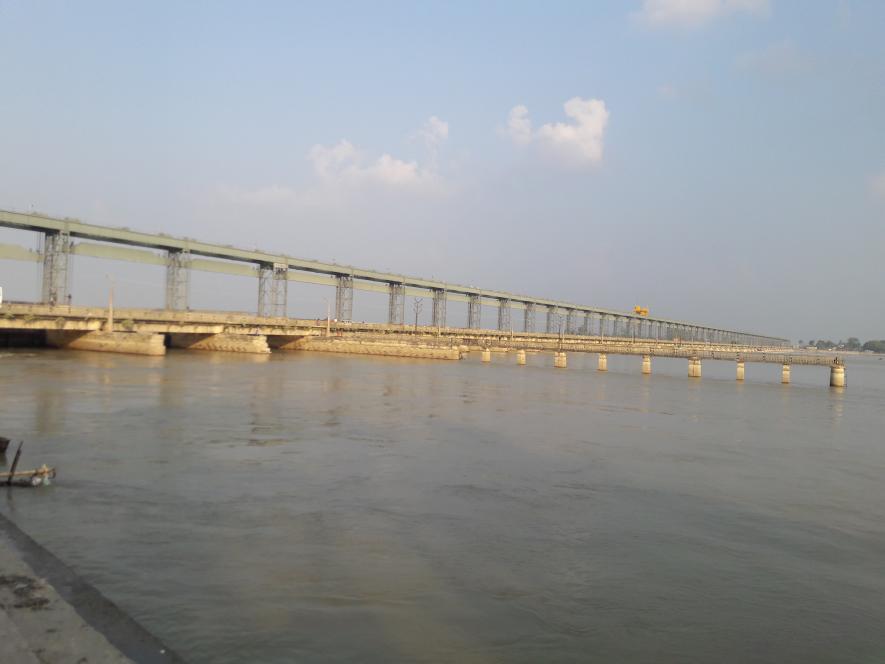‘Its a River, not a Road’: Plan to Change Koshi’s Course Could Spell Doom for the Environment

Image Courtesy: Wikipedia
As Bihar still reels from the after-effects of flooding, Chief Minister Nitish Kumar announced that the state would change of the course of the mighty Koshi river in the state after ancient relics had been discovered in Bhagalpur district.
Antiques, pottery, jewellery, tools, triangular bricks, copper coins and fossils were recovered from the land around Guaridih village. During a visit to the area, the CM said the Kosi river would be removed to preserve the nearly 2,500-year-old archeological site in Bhagalpur district.
“The historical sites are facing threats from the Koshi. So, we have planned to divert the course of the river and link it with its old course,” the CM said.He also asked concerned officials to prepare a detailed project report to divert the river. The move could reportedly cost the exchequer about Rs 50 crores. The Koshi currently flows around 300-400 metres from the site.
It is a River, Not a Road; The Damage Could be Unprecedented
As the government takes on this mammoth task, environmentalists have raised an alarm over the potential damage changing the course of a river could do. The Koshi has a tumultuous history of flooding regularly. During the 2008 flood, around a million people were evacuated from their homes. More than 300,000 houses were destroyed and crops spread over at least 840,000 acres were damaged. The flooding was the worst seen the past in the past 50 years and it was declared as a ‘national calamity’ by the Government of India.
Speaking to NewsClick, Eklavya Prasad from the Megh Pyne Abhiyaan, known as the water man of Bihar, said: “In north Bihar, the dominant flood control measure is in the form of a structural intervention, which is the construction of embankments across major river basins. Embankments were constructed largely to regulate the flow of rivers and for reducing the flood vulnerability in the region. However, in reality it is just the reverse.”
Prasad said that between 2006 and 2020, 102.32 million people were affected by floods in the region and the number of districts affected during the same duration was 262 (22 districts in North Bihar are flood prone).
“Between 2006 and 2019, the total estimated crop damage according to the Disaster Management Department Government of Bihar, was Rs 30,198 million. If this is the impact of the most coveted flood control strategy, then it is obvious that there will be fear around the decision of changing the course of a river or rivers, keeping in view local implications and irrespective of the reasons behind altering the course of the river. Last but not the least, a river should not be dealt with like a road because it not only supports aquatic and human life, but plays a critical role in ensuring a balanced ecology, unless disturbed. Therefore, the government of Bihar must explore ecologically sustainable options,” he added.
There are many unanswered questions before the government. These include questions of displacement of the local inhabitants, the manner in which this decision was taken and about the strategies in place to control flooding due to the project.
Speaking to NewsClick, Sripad Dharamadikary from the Manthan Adhyayan Kendra – an organisation working on water resources – said: “It is not worth diverting the river as the artefacts etc can be relocated. Diverting the river will be very difficult; it will cause a lot of destruction and may not even last as the Koshi could breach the embankments again.”
Previously, the Koshi river had picked an old channel it had abandoned over 100 years previously near the border with Nepal and India. Approximately 2.7 million people were affected as the river broke its embankment at Kusaha in Nepal, submerging several districts of Nepal and India. About 95% of Koshi's water flowed through the new course. The cause behind the regular flooding is stated to be 1,082 million tonnes of silt that has been deposited in it in the river, which causes floods each year.
Read More: In Pictures: Parts of Chennai Face Neglect and Flooding
Get the latest reports & analysis with people's perspective on Protests, movements & deep analytical videos, discussions of the current affairs in your Telegram app. Subscribe to NewsClick's Telegram channel & get Real-Time updates on stories, as they get published on our website.
























